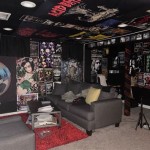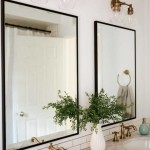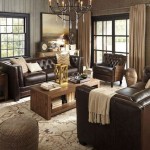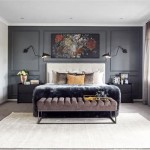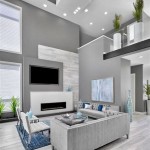1950s Dining Room Decor
The 1950s marked a significant shift in American culture, including a renewed focus on the home and family life. This era saw the rise of suburbia and a burgeoning middle class eager to embrace modern conveniences and design aesthetics. Dining rooms, as the heart of family gatherings, reflected this cultural shift, showcasing distinct styles and characteristics that continue to inspire interior design today.
Color palettes in 1950s dining rooms often featured vibrant hues. Pastel shades like turquoise, pink, and yellow were popular choices, bringing a light and airy feel to the space. These were frequently paired with bolder accent colors such as red, black, or gold, creating a dynamic and visually appealing contrast. Wallpaper, a staple of the era, often showcased floral patterns, geometric shapes, or whimsical depictions of everyday life, further enhancing the room's character.
Furniture in 1950s dining rooms typically embraced a blend of modern and traditional elements. The iconic chrome dinette set, with its sleek lines and vinyl-upholstered chairs, became a symbol of mid-century modernism. Alternatively, more traditional wooden dining tables and chairs, often featuring intricate carvings or ornate details, remained a popular choice for those seeking a more classic aesthetic. Built-in cabinetry and sideboards provided ample storage space and showcased the era's focus on practicality.
Lighting played a crucial role in establishing the ambiance of a 1950s dining room. Chandeliers, ranging from elaborate crystal fixtures to simpler, more streamlined designs, were commonly used as statement pieces. Pendant lights and wall sconces provided additional illumination and further contributed to the room's overall aesthetic. The strategic placement of lighting fixtures helped to create a warm and inviting atmosphere for family meals and gatherings.
Textiles contributed significantly to the overall look and feel of 1950s dining rooms. Curtains or drapes, often made from heavy fabrics like velvet or damask, added a touch of elegance and provided privacy. Tablecloths and napkins, featuring patterns that coordinated with the room's color scheme or wallpaper, completed the dining experience. Area rugs, frequently placed beneath the dining table, helped to define the space and add a touch of warmth.
Decorative accessories played a vital role in personalizing 1950s dining rooms. Wall art, often featuring landscapes, still lifes, or abstract designs, added visual interest and reflected the homeowner's personal taste. Ceramic figurines, vintage clocks, and decorative bowls were commonly displayed on sideboards or shelves. Plants, both real and artificial, brought a touch of nature indoors and further enhanced the room's welcoming atmosphere.
The influence of atomic age design is evident in some 1950s dining rooms. This style, inspired by the post-war fascination with science and technology, featured futuristic shapes, bold geometric patterns, and the use of new materials like fiberglass and plastic. Starburst clocks, boomerang-shaped furniture, and atomic-themed wallpaper are hallmarks of this distinctive design trend.
Reproducing a genuine 1950s dining room aesthetic involves careful attention to detail. Sourcing authentic vintage furniture, lighting fixtures, and accessories can be a rewarding process for those seeking an authentic look. However, modern reproductions of classic 1950s pieces are readily available, offering a more accessible and often more budget-friendly option.
When incorporating 1950s elements into a modern dining room, consider focusing on key design elements. A retro dinette set, paired with contemporary lighting and accessories, can create a stylish and eclectic look. Alternatively, incorporating vintage-inspired wallpaper or textiles can subtly evoke the era's charm without overwhelming the space. The key is to strike a balance between honoring the past and creating a space that feels fresh and relevant to today's lifestyles.
The popularity of 1950s dining room decor continues to resonate with homeowners today. The era's emphasis on family, comfort, and stylish design holds timeless appeal. Whether seeking a full-fledged retro revival or simply incorporating a few vintage-inspired touches, the 1950s offer a rich source of inspiration for creating a dining room that is both stylish and inviting.
The versatility of the 1950s aesthetic allows for a wide range of interpretations. From the playful vibrancy of pastel color palettes to the sleek sophistication of chrome dinette sets, there are countless ways to incorporate the charm of this era into a modern dining room. By understanding the key design elements and materials of the 1950s, homeowners can create a space that reflects their personal style while celebrating the timeless appeal of mid-century design.
The resurgence of interest in mid-century modern design has contributed significantly to the continued popularity of 1950s dining room decor. This renewed appreciation for the era's clean lines, functional design, and optimistic spirit has made 1950s-inspired furniture, lighting, and accessories more readily available than ever before. This accessibility has made it easier for homeowners to embrace the retro charm of the 1950s and create dining rooms that are both stylish and inviting.

1950s Traditional Dining Room Home Decor Vintage House

Retro 1950s Home Decor Ideas And Must Have Elements Adria

Colorful Dining Table 1956 1950s Room Modern Home Decor

Retro 1950s Home Decor Ideas And Must Have Elements Adria

Decor Ideas From The Homes Of 1950 S Vintage Inn

Get The Look Mid Century Modern Furniture And Retro Decor Of 1950s Cbc Life

Great Design 1950s Architectural Digest

Design Through The Decades 1950s

Vintage S Of American Living Rooms Family And Dens From The 1950s Everyday

Retro 1950s Home Decor Ideas And Must Have Elements Adria

